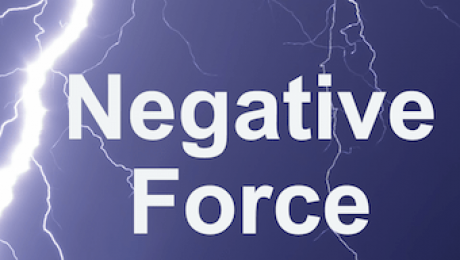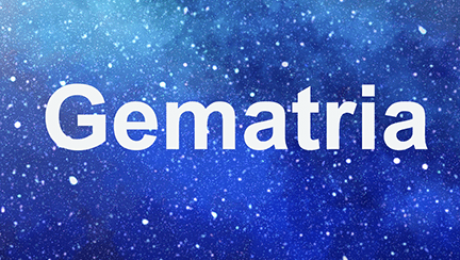Since the goal is to make the upper masculine and feminine energies unite, man has to “resemble” physically the higher masculine configuration, i.e. configuration זעיר אנפין. The Tefilin on the head represent the directive lights he receives from the higher configuration of אימה; the Tefilin on the hand represent the feminine configuration that attaches to his left side. The Talit represents his surrounding lights given also by the configuration אימה.
After configuration זעיר אנפין receives his directive lights from the higher configuration of אימה and they enter his head, they emerge from his forehead toward the outside in four different lights. The Tefilin of the head represent these lights; they comprise four compartments, each one containing a portion of text from the Torah, written on parchment.
Each one of these four lights also brings out an aspect of Levush (garment), which are the four compartments for the Parashiot.
Since the Mo’hin are directive lights that comprise ten Sephirot, the Tefilin are a representation of these ten lights:
The four compartments on the forehead are the Sephirot HBD – חכמה, בינה, דעת (which divides in two).
The two straps on the side of the head are the Sephirot חסד and גבורה.
The knot on the back is Sephira תיפארת.
The two straps that come down on the sides are the Sephirot Netsa’h and הוד: Netsa’h until the chest and הוד until the navel.
The knot that makes the י (Yud) on the Tefilin of the hand is the Sephira יסוד of configuration ז׳א. From there (the arm of ז׳א), the building of the feminine configuration begins.
The Tefilin on the arm represent the feminine configuration Ra’hel. The order of the Parashiot is the same as in the Tefilin on the head, but in only one parchment.
The three wrappings on the biceps correspond to the three first Sephirot of נוקבה. The seven wrappings on the forearm correspond to the seven lower Sephirot.
The three wrappings on the finger correspond to the NHY (נצח, הוד, and יסוד) of ז׳א, which enter inside the נוקבה to be its Mo’hin – directive lights.
Since configuration ז׳א receives two types of directive lights, one from the configuration אבה, and one from the configuration אימה, there are two types of Tefilin:
- Tefilin of אימה are called Tefilin of Rashi. They are the regular type worn by all
- Tefilin of אבה are called Tefilin of Rabenu Tam. They are worn by only a few, together or after the ones of Rashi
The difference is in the order of the writing of the four Torah portions – Parashiot.
As we can see, every element of the prayers, whether physical or spiritual, has very deep and essential meanings to give important forces and power to the one praying. It is a pity that these powerful and beautiful rituals are taken mistakenly for “folkloric recitations” in an incomprehensible language, part of “one has to do” type of thing when attending a prayer in a synagogue.
By making the effort to understand the deeper meanings of these rituals, one will discover a whole new definition and reason for his special relationship with the higher worlds and his Creator
The soul has five levels, their names are: Nefesh, Rua’h, Neshama, ‘Haya and Ye’hida. The soul is the spiritual entity inside the body, the latter being only its outer garment. Each soul has a precise root and a possibility of acquiring the highest level of this root. All come first with a lower level, and will, if they merit, attain the next higher level.
Nefesh
The first and lower level. It is acquired at birth and before the succeeding levels. It corresponds to the level of the physical world of ‘Asiah and of the feminine configuration Nukva.
Rua’h
The second level and is acquired before the succeeding levels. It corresponds to the level of the world of angels – Yetsirah and configuration Zeir Anpin.
Neshama
The third level and can be acquired only after acquiring the level of Nefesh and Rua’h. It corresponds to the level of the world of souls – Beriah and configuration Imah.
‘Haya
The fourth level and can only be acquired after the preceding levels. It corresponds to the level of the world of emanation – Atsilut and configuration Abah.
Ye’hida
The fifth and highest level; it is very rarely attained and can only be acquired after the Tikun (rectification) of all the preceding levels. It corresponds to the level of the world of emanation – Atsilut and configuration Arikh Anpin.
Correspondence between the five levels of souls, four worlds and five configurations
| Soul | World | Configuration |
| Ye’hida | Atsilut | Arikh Anpin |
| Hayah | Atsilut | Abah |
| Neshama | Beriah | Imah |
| Rua’h | Yetsirah | Zeir Anpin |
| Nefesh | ‘Asiah | Nukva |
There are many divisions and categories of souls. They differ according to their origin or their level in the higher realms.
Each level of the soul is subdivided in five levels. As for the level of Nefesh, there are Nefesh of Nefesh, Rua’h of Nefesh, Neshama of Nefesh, ‘Haya of Nefesh and Ye’hida of Nefesh.
Each level of the soul has its own five levels
| Nefesh | Rua’h | Neshama | ‘Haya | Ye’hida |
| Ye’hida | Ye’hida | Ye’hida | Ye’hida | Ye’hida |
| ‘Haya | ‘Haya | ‘Haya | ‘Haya | ‘Haya (2) |
| Neshama | Neshama | Neshama | Neshama | Neshama |
| Rua’h | Rua’h | Rua’h | Rua’h | Rua’h |
| Nefesh (1) | Nefesh | Nefesh | Nefesh | Nefesh |
(1) Nefesh of Nefesh is the lowest level for a soul
(2) ‘Haya of Ye’hida is almost the highest
Each level of Nefesh subdivides again
| Level | Nefesh | Rua’h | Neshama | ‘Haya | Ye’hida |
| Nefesh | Ye’hida | Ye’hida | Ye’hida | Ye’hida | Ye’hida |
| Nefesh | ‘Haya | ‘Haya (1) | ‘Haya | ‘Haya | ‘Haya |
| Nefesh | Neshama | Neshama | Neshama | Neshama | Neshama (3) |
| Nefesh | Rua’h (2) | Rua’h | Rua’h | Rua’h | Rua’h |
| Nefesh | Nefesh | Nefesh | Nefesh | Nefesh | Nefesh |
Each level can again be subdivided, for example:
(1) ‘Haya of Rua’h of Nefesh is a higher level than
(2) Rua’h of Nefesh of Nefesh but lower than
(3) Neshama of Ye’hida of Nefesh
Each soul has its origin in the different worlds and configurations. The quality of the soul will depend on which configuration and from which world it has its root. A soul with a higher origin will be of superior quality and will have a better potential for understanding and approaching nearer to its Creator, on the condition, of course, that it acts accordingly and reaches its potential.
Each one of these levels of the soul subdivides for each level of Partsuf – configuration and for each world. Therefore, there are five levels of soul for each configuration and there are five levels of configurations for each world, etc. Each one of these levels can again subdivide in many, adding numerous possibilities.
The goal of man is to reach each successively higher level of his soul; for that, he must perform the Tikun of the preceding levels. The higher levels of the soul cannot be acquired at once. Most men only have the level of נפש, and if they merit, they will acquire the succeeding levels – but one by one by dying and reincarnating. If he needs to acquire the level of אימה of עשיה, first, he must perform the Tikun of מלכות of עשיה, ז׳א of עשיה, and so on. To acquire his level of נשמה, he must perform the Tikun of all the levels of the Sephirot and configurations of his נפש and רוח, etc.
To do this Tikun could take a few lifetimes, the soul will then reincarnate as many times as needed to accomplish it.
All these complex possibilities have only one purpose; to allow man to have merit by his own efforts and get closer to his Creator. For this, he must get a higher level of soul and elevate his ways by doing his own Tikun.
There is a “second” authority called Sitra A’hra – negative force or “evil”. Even though it is the opposite of everything good, it is important to understand that the origin of “evil” is from an emanation of the superior lights, and thus, it does not really have a complete independent authority. It nourishes itself from the lower extremities of the holiness, and needs permission to act from above.
There is really only one unique and full authority, and it is the one of the Creator.
At the creation, when the ten feminine Sephirot of the aspect of the name of BaN (52) came out from the eyes of Adam Kadmon, the first three Sephirot – KHB (Keter, ‘Hokhma, Binah) – were able to stand in the three column arrangement. However, the seven lower Sephirot did not stand in this order; they were not able to retain their lights and consequently broke. This was the first imperfection or damage in the creation. It is only when there are three columns, where the one of mercy stands between the columns of kindness and rigor that the three can attach and bind together for a harmonious balance.
This imperfect arrangement is the first origin of the negative force or “evil”. This type of existence could not come to be from a perfect source; it had to originate from a defective state.
The breaking of the seven lower Sephirot caused a descent of all the worlds. The world of ‘Asiah fell even lower and from its end, the negative force emerged.
The Sephirot have their root in the holiness of the Ein Sof, B’H. The root of the negative force is in the lack or absence of the holiness. These husks obstruct the lights of the Sephirot, concealing man from his root and from the light.
In parallel (opposite) to the four worlds, this negative entity has its own four worlds, where ten groups of negative angels divide as follows:
- three groups in their world of Beriah
- six groups in their world of Yetsirah
- one group in their world of ‘Asiah.
They nourish from the extremities of the higher lights when the latter are weakened by the bad deeds of the lower beings. When this negative force receives its strength by sucking on these higher lights, its destructive angels get more powers and come to do evil in the world.
The existence of the Sitra A’hra – negative force – was willed by the Creator to give man free will. With falsehood, it almost constantly tries to seduce him, and make him stumble.
The good deeds of man have an effect on the four higher worlds, his bad deeds on the four lower worlds. It is only when man sins that the negative side can grow in strength.
When man acts negatively, he attracts a derivative of this negative force that grows inside him. This is his Yetser Hara’; it cuts him off from the higher worlds and the holiness. When he acts positively, he attracts positive energies that weaken the negative energies inside of him and give him strength to come closer to its creator.
Husks – Klipot
The husks are the individual manifestations of the negative force. They obstruct the lights of the lower Sephirot by attaching and nurturing from their extremities. They conceal man from the truth and from the light. Because of the bad deeds of the lower beings, the husks get and renew their strength to do evil in the world.
The Tikunim (rectifications) of the lower beings consist in detaching these husks from the holiness, by accomplishing the commandments and by the prayers. When men act negatively, they produce contrary energies that cause deteriorations that reach the lower worlds and create even more husks to do harm.
There are four main levels of husks, they correspond to the four lower worlds. They too comprise Sephirot and configurations as in the positive worlds, and are also built on the three column arrangement of the Sephirotic trees. But they have the aim of acting contrary to the above positive worlds by emanating negative and hurtful energies.
There are different systems of interpretation of the hidden meanings of the Torah. One of them is the Gematria, where the mathematical values of each letter or word are calculated. Each letter having its own numerical value, the fact that some words have the same total is not just coincidence, but denotes a similarity or complementarity.
It is one of the different systems of interpretation of the hidden meanings of the Torah, where mathematical values of letters, words, and sentences are calculated to find a similarity or complementarity. Each letter has its own numerical value.
| Letter | Name | Value |
| א | Aleph | 1 |
| ב | Beit | 2 |
| ג | Gimel | 3 |
| ד | Dalet | 4 |
| ה | He | 5 |
| ו | Vav | 6 |
| ז | Zain | 7 |
| ח | ‘het | 8 |
| ט | Tet | 9 |
| י | Yud | 10 |
| כ | Khaf | 20 |
| ל | Lamed | 30 |
| מ | Mem | 40 |
| נ | Nun | 50 |
| ס | Samekh | 60 |
| ע | ‘ain | 70 |
| פ | Pey | 80 |
| צ | Tsadey | 90 |
| ק | Kuf | 100 |
| ר | Resh | 200 |
| ש | Shin | 300 |
| ת | Tav | 400 |
The final letters also have their own numerical values:
| Letter | Name | Value |
| ך | Final Khaf | 500 |
| ם | Final Mem | 600 |
| ן | Final Nun | 700 |
| ף | Final Pey | 800 |
| ץ | Final Tsadey | 900 |
There are seven main types of Gematriot:
- Ragil – regular
- Katan – small value
- HaKlali – value squared
- Kolel – regular plus a value for one or all the letters
- HaKadmi – regular plus the value of the preceding letters
- HaPerati – each letter squared
- Miluy- sum of the spellings
1 – Ragil: the numbers of the letters are as follows:
| From | To | Value |
| א | ט | 1 – 9 |
| י | צ | 10 -90 |
| ק | ת | 100 – 400 |
| ך | ץ | 500 -900 |
Ex : הארץ = 1106
2 – Katan: tens and hundreds are reduced to one digit.
| From | To | Value |
| א | ט | 1 – 9 |
| י | צ | 1 – 9 |
| ק | ת | 1 – 4 |
| ך | ץ | 5 -9 |
Ex : הארץ = 17
3 – HaKlali: the Ragil value of the word squared.
Ex : הארץ = 1106 * 1106 = 1 223 236
4 – Kolel: the Ragil value of the word + the numbers of letters, or + 1 for the word.
Ex : הארץ = 1106 + 4 = 1110
or 1106 + 1 = 1107
5 – HaKadmi: each letter has its Ragil value plus the total of all the ones preceding it.
| From | To | Value |
| א | ט | 1 – 45 |
| י | צ | 55 – 495 |
| ק | ת | 595 –1495 |
| ך | ץ | 1995 – 4995 |
Ex : הארץ = 15+1+795+4995 = 5806
6 – HaPerati: each letter is squared.
Ex : הארץ = 5 * 5 = 25, 1 * 1 = 1
200 * 200 = 40 000, 900 * 900 = 810 000 Total = 850 026
7 – Miluy: the sum of the spelling of each letter.
| Letter | Miluy | Value |
| ה | הא | 6 |
| א | אלף | 111 |
| ר | ריש | 510 |
| ץ | צדי | 104 |
Ex : הארץ = 731
By the Gematriot, we see that each letter and word has a dynamic meaning beyond the simple definitions. Gematria is only one of the secret ways of interpreting the hidden meanings in the Torah.
There are also permutation systems where letters are replaced by others in a set order as “ATBaSH” where the first letter is replaced by the last, the second by the one before the last etc. “Notrikun”, where initials of different words make a new word, and many other systems.



